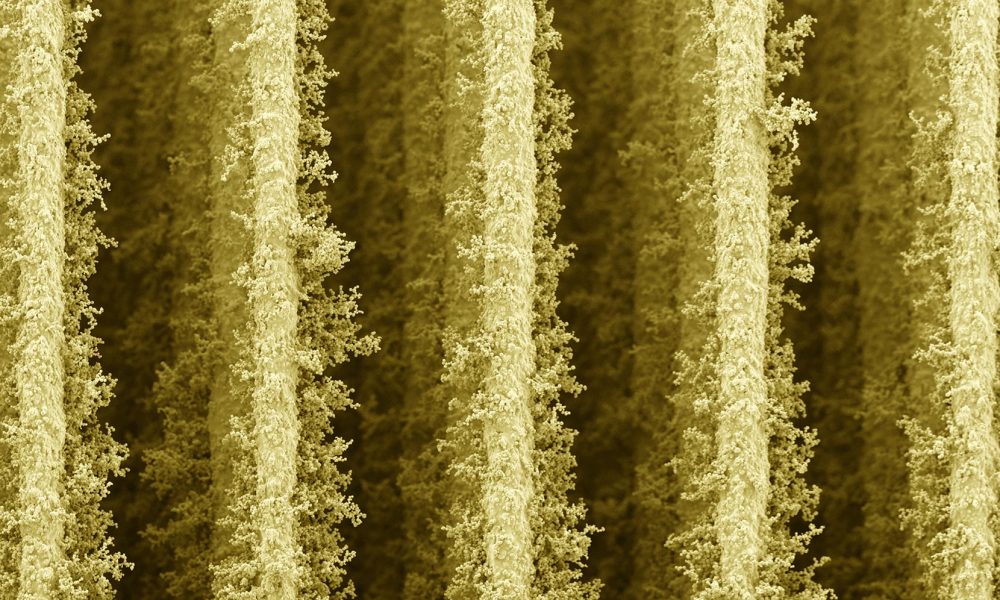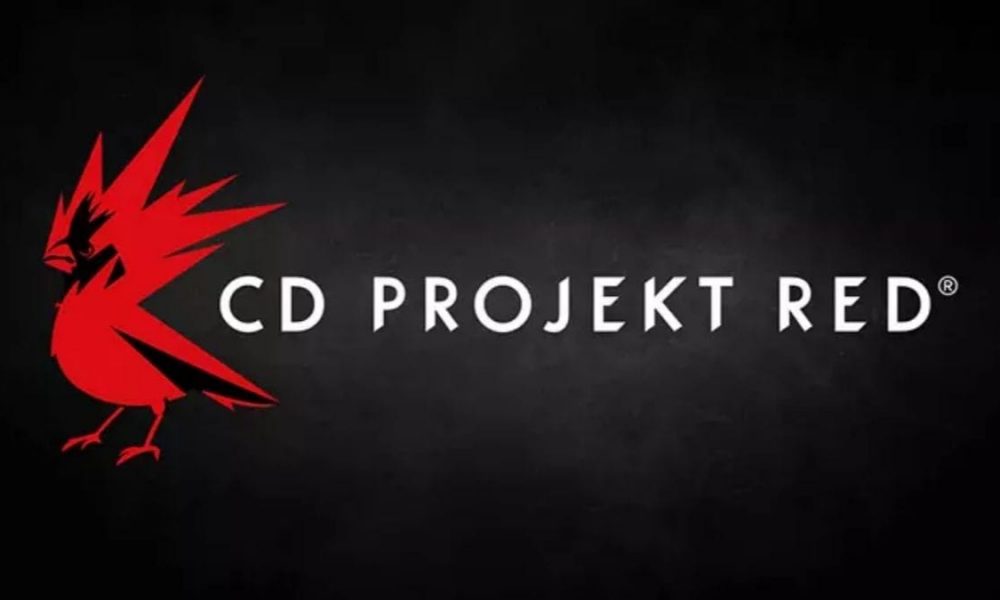Gotham Knights is arguably one of the most anticipated video games of 2022. While we still don’t have a concrete release date for the upcoming superhero game, details of an unannounced playtest were revealed on Steam and then immediately removed. Also Read – Best Relaxing Games to Play on Mobile in 2022 A Reddit user (SuspiciousTension19) posted the details of the playtest that was spotted on Steam. The post was quickly removed from the platform on the grounds that “automatic bots think it might be spam.” The details of the app can also be seen below Steam DBto. Also read – Bandai Namco is developing its own Metaverse with all its IPs in one place Discovered by PCGN People played the playtest before it was summarily removed from Steam. The game’s playtest reportedly occupied 82.5 GB of storage space. Also Read – Uncharted’s Nathan Drake Coming to Fortnite: Details Here It is said that it may be a closed beta that was not intended to be released to the public and was intended for testing purposes only. Some are also speculating that this is a leak for an upcoming beta of the game. As of now, we can keep our excitement to ourselves and take any guesswork with a pinch of salt. After that, however, we expect to hear something concrete about the possible test soon. This test follows a mysterious image of the game that has surfaced online, claiming that the game will be released next month. However, the image was unsourced and was reportedly taken at an unspecified Irish video game store. It could just be a placeholder date. WB Games Montreal hasn’t published any comments yet. We expect the image to be just a placeholder, considering a game this big won’t release without pre-release marketing. WB Games Montreal has been keeping developments close to its chest regarding the game, and we haven’t heard much about it since the game was pushed back to 2022 nearly a year ago.
3D-Printed “Nano-Skyscrapers” Help Bacteria Convert Sunlight Into Electricity
University of Cambridge researchers used 3D printing to create lattices of high-rise “nano-enclosures” in which sun-loving bacteria can grow rapidly. Researchers were then able to extract the bacteria’s waste electrons left over from photosynthesis, which could be used to power small electronic devices. Photo credit: Gabriella Bocchetti Researchers have built tiny “skyscrapers” for bacterial communities, helping them generate electricity using just sunlight and water. The University of Cambridge researchers used 3D printing to create lattices of high-rise nanohousings in which sun-loving bacteria can grow rapidly. Researchers were then able to extract the bacteria’s waste electrons left over from photosynthesis, which could be used to power small electronic devices. Other research teams have extracted energy from photosynthetic bacteria, but the Cambridge researchers found that providing the right kind of home increases the amount of energy they can extract by more than an order of magnitude. The approach is competitive with traditional renewable bioenergy production methods and has already achieved solar conversion efficiencies that can surpass many current biofuel production methods. Their findings reported in the journal natural materialsopen new avenues in bioenergy production and suggest that “biohybrid” solar energy sources could be an important component in the carbon-free energy mix. University of Cambridge researchers used 3D printing to create lattices of high-rise skyscrapers in which sun-loving bacteria can grow rapidly. Researchers were then able to extract the bacteria’s waste electrons left over from photosynthesis, which could be used to power small electronic devices. Photo credit: Gabriella Bocchetti Current renewable technologies such as silicon-based solar cells and biofuels far outperform fossil fuels in terms of carbon emissions, but they also have limitations, such as: B. dependence on mining, challenges in recycling and dependence on agriculture and land use, leading to loss of biodiversity. “Our approach is a step towards even more sustainable renewable energy devices for the future,” said Dr. Jenny Zhang from the Yusuf Hamied Department of Chemistry who led the research. Zhang and her colleagues from the Department of Biochemistry and the Department of Materials Science and Metallurgy are working to rethink bioenergy into something that is sustainable and scalable. Photosynthetic bacteria or cyanobacteria are the most abundant life form on earth. For several years, researchers have been trying to “rewire” the photosynthetic mechanisms of cyanobacteria to extract energy from them. “There was a bottleneck in terms of how much energy you can actually harvest from photosynthetic systems, but no one understood where the bottleneck was,” Zhang said. “Most scientists assumed that the bottleneck on the biological side was bacteria, but we found that a major bottleneck is actually on the material side.” Cyanobacteria need a lot of sunlight to grow – like the surface of a lake in summer. And to harvest the energy they produce through photosynthesis, the bacteria need to be attached to electrodes. The Cambridge team 3D printed custom metal oxide nanoparticle electrodes tailored to work with the cyanobacteria in photosynthesis. The electrodes were printed as highly branched, densely packed columnar structures, like a tiny city. Zhang’s team developed a printing technique that allows control over multiple length scales, making the structures highly customizable, which could benefit a variety of areas. “The electrodes have excellent light-conducting properties, like a high-rise apartment with many windows,” Zhang said. “Cyanobacteria need something to attach themselves to and form a community with their neighbors. Our electrodes enable a balance between a lot of surface area and a lot of light – like a glass skyscraper.” Once the self-assembling cyanobacteria were in their new “wired” home, the researchers found that they were more efficient than other current bioenergy technologies, such as biofuels. The technique increased the amount of energy extracted by more than an order of magnitude over other methods of producing bioenergy from photosynthesis. “I was surprised that we were able to match the numbers we achieved – similar numbers have been predicted for many years, but this is the first time these numbers have been shown experimentally,” Zhang said. “Cyanobacteria are versatile chemical factories. Our approach allows us to get early into their energy conversion pathway, which helps us understand how they perform the energy conversion so we can leverage their natural pathways for renewable fuels or chemical generation.” Reference: “3D Printed Hierarchical Column Array Electrodes for High-Performance Semi-Artificial Photosynthesis” March 7, 2022, natural materials.DOI: 10.1038/s41563-022-01205-5 The research was supported in part by the Biotechnology and Biological Sciences Research Council, the Cambridge Trust, the Isaac Newton Trust and the European Research Council. Jenny Zhang is a BBSRC David Phillips Fellow in the Department of Chemistry and a Fellow at Corpus Christi College, Cambridge.
Metasurface-Based Antenna Turns Ambient Radio Waves Into Electric Power
The technology could make it possible to use radio emissions from cellular networks to wirelessly power sensors and LEDs. Researchers have developed a new metasurface-based antenna, which represents an important step towards practical use of energy harvested from radio waves, such as those used in cellular networks or Bluetooth connections. This technology could potentially wirelessly power sensors, LEDs, and other simple, low-power devices. “By eliminating cable connections and batteries, these antennas could help reduce costs, improve reliability and make some electrical systems more efficient,” said research team leader Jiangfeng Zhou of the University of South Florida. “This would be useful for powering smart home sensors, e.g. such as those used for temperature, lighting and movement, or sensors used to monitor the structure of buildings or bridges where replacing a battery might be difficult or impossible.” In the diary Express for optical materials, the researchers report that laboratory tests of their new antenna have shown that it can harvest 100 microwatts of power from low-power radio waves, enough to power simple devices. This was possible because the metamaterial used to make the antenna has perfect absorption of radio waves and is designed to work at low intensities. The researchers tested their metamaterial-based antenna in an anechoic chamber. The radio wave is emitted by the horn antenna on the left and received by the meta-surface antenna mounted on the wooden frame on the right. The anechoic chamber eliminates background signals from other sources and prevents stray signals from the radio wave source from bouncing around the room and interfering with measurements. The image of the metamaterial-based antenna is zoomed in on the right. Credit: Jiangfeng Zhou and Clayton Fowler “Although more work is required to miniaturize the antenna, our device exceeds a key threshold of 100 microwatts of harvested power with high efficiency using ambient power levels found in the real world,” said Clayton Fowler, the team member who developed the Sample prepared and performed the measurements. “The technology could also be adapted so that a radio wave source could be provided to power or charge devices in a room.” Get energy from the air Scientists have been trying to harvest energy from radio waves for a long time, but harvesting enough energy to be useful has been difficult. This is changing thanks to the evolution of metamaterials and the ever-increasing number of available environmental sources of radiofrequency energy, such as cellular networks, Wi-Fi, GPS, and Bluetooth signals. “With the tremendous explosion of radio wave-based technologies, there will be a lot of electromagnetic waste emissions that could be collected,” Zhou said. “Combined with advances in metamaterials, this has created a mature environment for new devices and applications that could benefit from the collection and utilization of this waste energy.”
Video game companies that have halted their services in Russia
Epic Games Epic Games also joins EA in banning trade with Russia in its games. The company notes that it will not ban Russian players from accessing it. It remains to be seen whether the trading ban will also apply to games or microtransactions.
The Benefits of Peripheral Vision for Machines
New research from MIT suggests that a certain type of computer vision model, trained to be robust to imperceptible noise added to image data, encodes visual representations similar to how humans do with peripheral vision. Photo credit: Jose-Luis Olivares, MIT Researchers are finding similarities between the way some computer vision systems process images and the way people see out of the corner of their eyes. Maybe computer vision and human vision have more in common than you think? research out[{” attribute=””>MIT suggests that a certain type of robust computer-vision model perceives visual representations similarly to the way humans do using peripheral vision. These models, known as adversarially robust models, are designed to overcome subtle bits of noise that have been added to image data. The way these models learn to transform images is similar to some elements involved in human peripheral processing, the researchers found. But because machines do not have a visual periphery, little work on computer vision models has focused on peripheral processing, says senior author Arturo Deza, a postdoc in the Center for Brains, Minds, and Machines. “It seems like peripheral vision, and the textural representations that are going on there, have been shown to be pretty useful for human vision. So, our thought was, OK, maybe there might be some uses in machines, too,” says lead author Anne Harrington, a graduate student in the Department of Electrical Engineering and Computer Science. Researchers started with a set of images, and used three different computer vision models to synthesize representations of those images from noise: a “normal” machine-learning model, one that had been trained to be adversarially robust, and one that had been specifically designed to account for some aspects of human peripheral processing, called Textorms. Credit: Courtesy of the researchers The results suggest that designing a machine-learning model to include some form of peripheral processing could enable the model to automatically learn visual representations that are robust to some subtle manipulations in image data. This work could also help shed some light on the goals of peripheral processing in humans, which are still not well-understood, Deza adds. The research will be presented at the International Conference on Learning Representations. Double vision Humans and computer vision systems both have what is known as foveal vision, which is used for scrutinizing highly detailed objects. Humans also possess peripheral vision, which is used to organize a broad, spatial scene. Typical computer vision approaches attempt to model foveal vision — which is how a machine recognizes objects — and tend to ignore peripheral vision, Deza says. But foveal computer vision systems are vulnerable to adversarial noise, which is added to image data by an attacker. In an adversarial attack, a malicious agent subtly modifies images so each pixel has been changed very slightly — a human wouldn’t notice the difference, but the noise is enough to fool a machine. For example, an image might look like a car to a human, but if it has been affected by adversarial noise, a computer vision model may confidently misclassify it as, say, a cake, which could have serious implications in an autonomous vehicle. Researchers designed a series of psychophysical human experiments where participants were asked to distinguish between original images and the representations synthesized by each model. This photo shows an example of the experiment’s set up. Credit: Courtesy of the researchers To overcome this vulnerability, researchers conduct what is known as adversarial training, where they create images that have been manipulated with adversarial noise, feed them to the neural network, and then correct its mistakes by relabeling the data and then retraining the model. “Just doing that additional relabeling and training process seems to give a lot of perceptual alignment with human processing,” Deza says. He and Harrington wondered if these adversarially trained networks are robust because they encode object representations that are similar to human peripheral vision. So, they designed a series of psychophysical human experiments to test their hypothesis. Screen time They started with a set of images and used three different computer vision models to synthesize representations of those images from noise: a “normal” machine-learning model, one that had been trained to be adversarially robust, and one that had been specifically designed to account for some aspects of human peripheral processing, called Texforms. The team used these generated images in a series of experiments where participants were asked to distinguish between the original images and the representations synthesized by each model. Some experiments also had humans differentiate between different pairs of randomly synthesized images from the same models. Participants kept their eyes focused on the center of a screen while images were flashed on the far sides of the screen, at different locations in their periphery. In one experiment, participants had to identify the oddball image in a series of images that were flashed for only milliseconds at a time, while in the other they had to match an image presented at their fovea, with two candidate template images placed in their periphery. In the experiments, participants kept their eyes focused on the center of a screen while images were flashed on the far sides of the screen, at different locations in their periphery, like these animated gifs. In one experiment, participants had to identify the oddball image in a series of images that were flashed for only milliseconds at a time. Credit: Courtesy of the researchers In this experiment, researchers had humans match the center template with one of the two peripheral ones, without moving their eyes from the center of the screen. Credit: Courtesy of the researchers When the synthesized images were shown in the far periphery, the participants were largely unable to tell the difference between the original for the adversarially robust model or the Texform model. This was not the case for the standard machine-learning model. However, what is perhaps the most striking result is that the pattern of mistakes that humans make (as a function of where the stimuli land in the periphery)
Halo Infinite Season 2 to bring new maps, modes, co-op campaign to arrive some time in next month
Halo Infinite has already achieved dazzling fame since its debut and 343 Industries is now preparing for the launch of the second season. Season 2 of Halo Infinite, billed as the “Lone Wolves,” will be released on May 3, 2022. Details on the new season were shared on Halo Waypoint by Halo Infinite creative director Joseph Staten. Also read – Musk once again shows his admiration for Halo Infinite “By “theme” we mean a core idea that guides the creation of much, but not all, of a Season’s content. Lone Wolf Spartans are hunters. Tracker. They are resourceful improvisers, operating deep within enemy territory without supplies or support. They’re fierce, hardy, and prefer to work alone—but they’re still loyal to the Spartan pack,” Joseph said. Also read – Halo Infinite and Forza Horizon 5 have been played by over 38 million people Also Read – How Your Regular PC/Laptop Can Fulfill Your Pro Gamer’s Dream As usual, Halo Infinite gets a new Battle Pass and two free Armor Cores. Joseph also shared concept art of two lone wolves – Spartan Sigrid Eklund and Spartan Hieu Dinh. We expect to learn more about these characters and Spartan Commander Laurette Agryna in the new season with “a mix of cinematics and story events.” Similar to the current season, players will have the opportunity to try out the new Spartan look. The Break Armor Core will no doubt get all the attention. “During Season 2 we will also be delivering playlist updates, balance changes, new modes and maps, most notably an Arena map called Catalyst and a BTB map called Breaker. New modes include Last Spartan Standing, an elimination mode for everyone, as well as another new mode called Land Grab and the return of an updated all-time favorite, King of the Hill. ” he explained. Also, players will witness an Arena map – Catalyst and a Big Team Battle map called Breaker. There will be new modes including Last Spartan Standing, Land Grab and an updated King of the Hill. 343 Industries also confirmed progress on the Halo Infinite co-op campaign and Forge mode. The former still accompanies Season 2, although it will not be available at the start of the season due to the time it takes to refine it. More details about Season 2 will be released in April.
New Technology for Storing Summer Heat To Use in Winter
Image shows the heat loss of a house. New research into thermal energy storage could lead to summer heat being stored for winter. Photo credit: Active Building Centre, Swansea University Funding research into thermal energy storage, which could reduce costs and promote renewable energy. A new technology that could store heat for days or even months, supporting the transition to net-zero, is the focus of a new project involving the Swansea University-led Active Building Center research programme, which has just received funding of £146,000. The Department for Business, Energy and Industrial Strategy (BEIS) is funding the project through the Extended Duration Energy Storage Demonstration Programme, part of the £1bn Net Zero Innovation Portfolio (NZIP). Thermal energy storage — storing heat so it’s available when you need it — has the potential to drive up energy costs. It also solves one of the main problems of renewable energy sources, the so-called intermittency: wind and solar energy are dependent on weather conditions. Thermal energy storage means that excess energy generated during periods when renewable energy is plentiful can be stored and released to make up for future deficits. The project, called Adsorb (Advanced Distributed Storage for Grid Benefit), aims to demonstrate a modular system that could improve a building’s energy efficiency and ease the pressure on national energy systems. The system can be installed in new buildings or retrofitted to existing buildings. The team will evaluate two different types of advanced thermal energy storage technologies, both developed by Loughborough University. The first is thermochemical storage (TCS), which could store for weeks or even months without heat loss. It extracts heat from a thermal source such as a heat pump, electric heater, or solar thermal collector to dehydrate an active material, thereby “charging” the heat storage tank. After charging, the system can be cooled down to ambient temperature and the energy stored. Moisture is reintroduced when needed, which then releases the heat for use in the home. The second technology is Phase Change Material (PCM). This has the potential to provide daily thermal energy storage at far higher densities than traditional technologies. The PCM system also uses a heat source, this time to heat a chemical reservoir to convert the solid material to its liquid form. This stores latent heat for several days. The stored heat can be released to provide hot water or space heating simply by pumping lower temperature water through the system. Combined with intelligent control systems, these technologies could significantly reduce consumer bills and solve the problem of disruption, promote renewable energy and remove more carbon from the UK energy supply. The new funding will support a Pre-Feasibility Study to assess the potential benefits of these technologies. The Active Building Center research program will collaborate with Loughborough University, the University of Sheffield and Mixergy. Cooperation with industry is a crucial element of this project. Mixergy bring valuable experience in commercializing innovative technologies developed within academia, but they also have proven supply chains and distribution models that can help these technologies quickly reach mainstream markets. Having developed, launched and expanded a market for their smart stratified hot water tank, the Mixergy team is also in this project investigating how the proposed smart hot water storage system could be integrated into existing household energy systems. dr Ahsan Khan, principal investigator of the Active Building Center research program said: “Heat decarbonization simply won’t happen fast enough without innovations in heat storage. Seeing BEIS prioritize this critical path and our thermal storage team developing industry partnerships to make these technologies a reality feels like a big step on our journey to net zero.” UK Government Minister Greg Hands said: “Advancing energy storage technologies will be critical in our transition to cheap, clean and safe renewable energy. It will allow us to take full advantage of our domestic renewable energy sources, reduce costs and end our dependence on volatile and expensive fossil fuels. Through this competition, we ensure that the country’s most innovative scientists and thinkers receive our support to make this goal a reality.”
The Shadows finally out on app stores- Here’s what Square Enix brings for the players
Hitman Sniper, the acclaimed mobile title, is finally getting a sequel. While Square Enix announced the sequel to its shooter game at last year’s E3, the developer has now released Hitman Sniper: The Shadows for both Android and iOS platforms. Also Read – Good news for PS owners as Spider-Man is coming to Marvel’s Avengers on November 30th YouTube influencers have been posting hours of video clips to give players a good idea of the gameplay. The new game doesn’t feature Agent 47, but instead features six different snipers, each with unique skills. Each sniper’s weapon and stats can be upgraded with progression, allowing players to levitate with each individual assassin. PocketGamer points out that it is up to The Shadows agents to investigate the disappearance of 47 and restore global stability. Also read – Hitman Sniper: The Shadows Mobile Game Announced: Agent 47 is Missing In addition to shooting at targets, players can use their guns to activate traps, not just stalk their prey. Players have the option to try a unique PvP mode and have a chance to earn rewards, or they can opt for a full campaign. Also Read – Square Enix Announces New Guardians of the Galaxy at E3 2021: Details Here Commenting on their vision, Simon Doongoor, Senior Producer for Hitman Sniper: The Shadows at Square Enix Montréal said: “From the beginning, our goal has been to deliver a Hitman Sniper experience on mobile with high production value in terms of quality graphics and gameplay. We wanted this game to be the start of something new rather than a sequel. That vision gave us the freedom to go in a different direction, like launching The Shadows, and allowed us to create a deeper gaming experience for players.” In addition to new agents, players can expect new locations with vantage points, giving players room to hone their skills and shoot down unsuspecting enemies. As the game relies on PvP gameplay, Story Mode expands the chance to level up skills and earn gear. Since each level involves some sort of puzzle, immense precision is required to earn points and rewards in the game. Hitman Sniper: The Shadows doesn’t have controller support, though it does come with touch controls that early birds have criticized as clunky. The game can be downloaded for free on the App Store and Google Play Store. Have you tried the game yet? Share your experience in the comments section.
Cyberpunk 2077 developer ceases sales in Russia, Belarus
Ukraine is currently facing an invading attack from Russia, which is not welcomed by the world. While several countries are ready to support Ukraine, various tech companies such as EA Games, Google, Tesla and others have also shown support for them in different ways. Cyberpunk 2077 developer CD Projekt Red has announced that it will stop selling its products to Russia and Belarus. Also read: Ukraine’s appeal to cut Russia off the internet was rejected pic.twitter.com/C2TMk7m2KC Also Read: Tesla Offers Help to Ukrainians With Its Supercharger Network — CD PROJEKT RED (@CDPROJEKTRED) March 3, 2022 Also Read – Russia-Ukraine War: Netflix Refuses to Air State Channels in Russia Despite Regulations The company said in its announcement that it is working with its partners to suspend digital sales and halt physical shipments of CD PROJEKT Group products. It has also suspended the sale of all games distributed on the GOG platform in the Russia and Belarus territories. Following the announcement, the company released a report for its investors detailing the approximate cumulative share of Russia and Belarus in sales of CD PROJEKT RED products. Sales on GOG.COM over the past 12 months were 5.4 percent and 3.7 percent, respectively. This action comes shortly after EA Games decided to pull all Russian teams from its FIFA and NHL games. As a reminder, Ukraine’s Deputy Prime Minister Mykhailo Fedorov had urged gambling companies around the world to take action against Russia. In a letter tweeted by Fedorov, aimed at game development companies and esports platforms, urging them to temporarily suspend the participation of Russian and Belarusian teams and players in all international esports events and to cancel all international events on the territory of Russia and Belarus. In the tweet, he also urged companies like Riot Games, EA, and Ubisoft to close their offices in Russia. @xbox @playstation You probably know what is happening in Ukraine right now. Russia is not declaring war on Ukraine, but on the entire civilized world. If you support human values, you should live the Russian market! pic.twitter.com/tnQr13BsSv — Mykhailo Fedorov (@FedorovMykhailo) March 2, 2022 @EpicGames, @Nintendo, @RockstarGames, @2K, @MoontonGames, @BandaiNamcoUS, @PdxInteractive, @ATVI_AB, @konami, @bethesda, @TencentGames, @supercell Russia showed its true colors. It has no respect for principles and humanity. Stop this by stopping your games in Russia! — Mykhailo Fedorov (@FedorovMykhailo) March 3, 2022 In a separate message, Ubisoft recently provided additional funds to its Ukraine-based employees, prepaid their salary and provided alternative accommodation in neighboring countries. The Pokemon Company has announced it will support GlobalGiving with a $200,000 donation to provide humanitarian relief.
From Marvel’s Guardians of the Galaxy to Microsoft Flight Simulator, check full list
Microsoft just made a very exciting announcement for its Xbox Game Pass subscribers, revealing that it is adding seven new games to the service this month. This list includes Far: Changing Tides and Young Souls, both of which will be available as day-one titles. Apart from that, the company is also adding the much-hyped Marvel’s Guardians of the Galaxy to its users. Also read – Russia-Ukraine conflict: How tech companies are helping people in Ukraine Aside from the big game additions, it was also announced that Microsoft Flight Simulator will finally be coming to Xbox One, along with phones and other devices. The game will also be made available through the Xbox Cloud Gaming service, which is not yet available in India. Also read: The son of Microsoft CEO Satya Nadella dies at the age of 26 Other games being added to Game Pass include Lightning Returns: Final Fantasy XIII, Kentucky Route Zero, and Lawn Mowing Simulator. Also read – MWC 2022: Huawei MateBook X Pro 2022, MateBook e-laptops launched The announcement was made via the Xbox Wire blog, along with a list of new DLC and updates to existing games. The company also took this opportunity to announce the latest installation and game management features for the Xbox PC app. While the additions could be exciting for many players, the company also brought some bad news, stating that four games will be saying goodbye to the service on March 15th. These games include Nier: Automata, Phogs!, Torchlight 3 and The Surge 2. Before these games are no longer available, subscribers can choose to purchase them at a 20 percent discount. Microsoft has also said it will be adding more games to the service later this month. However, the list of added games did not appear. Xbox Game Pass is currently available at Rs 489 per month while Xbox Game Pass Ultimate is currently available at Rs 699 per month.













